Journey Through Tanach: Jerusalem's Legacy
Explore the sacred sites of Jerusalem in this captivating tour, featuring landmarks mentioned in the Tanach. Join this free walking tour for a profound experience!
Time
3 Hours
Stops
9 Places
Distance
4.2 km
Western Wall (Kotel)
The Western Wall is a sacred site in Judaism, believed to be the last remnant of the Second Temple, and is a place of prayer and pilgrimage.
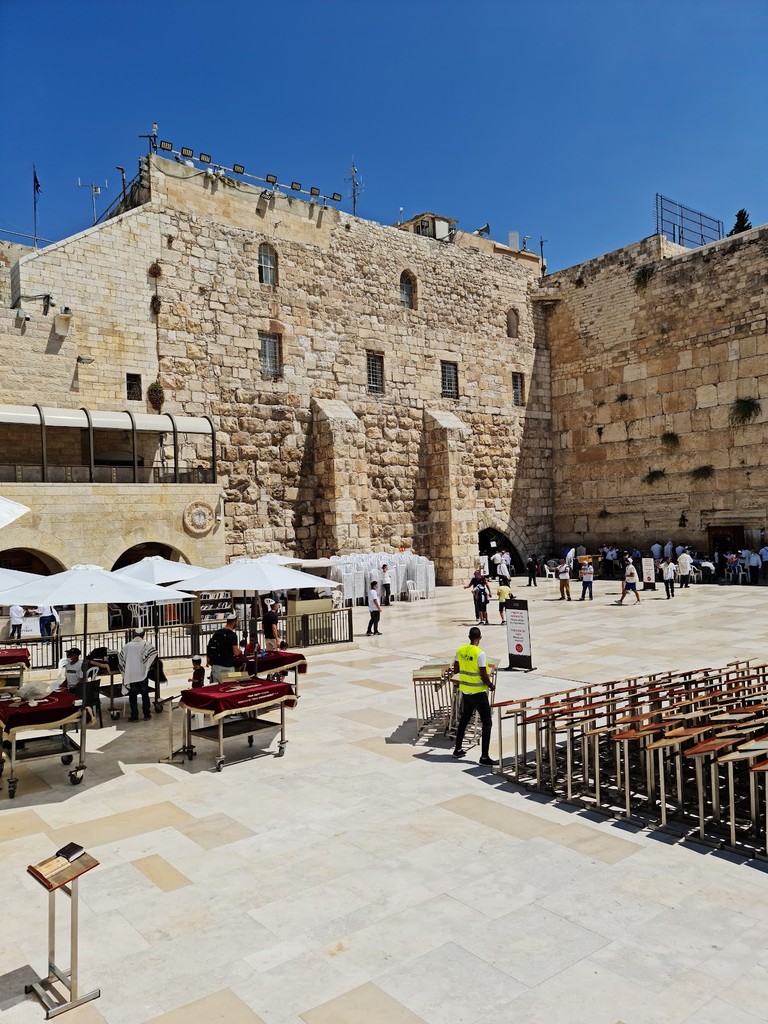
Western Wall (Kotel) (Source: Google Maps)
The Western Wall, or Kotel, is a revered site in Judaism, serving as the last remnant of the Second Temple. It is a place of deep spiritual significance where Jews from around the world come to pray, reflect, and connect with their heritage. The wall stands as a symbol of resilience and faith, attracting millions of visitors annually. Its ancient stones, worn smooth by the touch of countless hands, carry prayers written on slips of paper, inserted into the crevices. The Western Wall Plaza, a bustling area, hosts religious ceremonies and celebrations, including Bar and Bat Mitzvahs, and is a focal point for Jewish life in Jerusalem. The site also holds historical importance, as it has witnessed the tumultuous history of Jerusalem over centuries, embodying the enduring spirit of the Jewish people.
The Jewish Quarter
The Jewish Quarter is a vibrant area filled with historical sites, synagogues, and markets, reflecting the heritage and culture of Jerusalem.
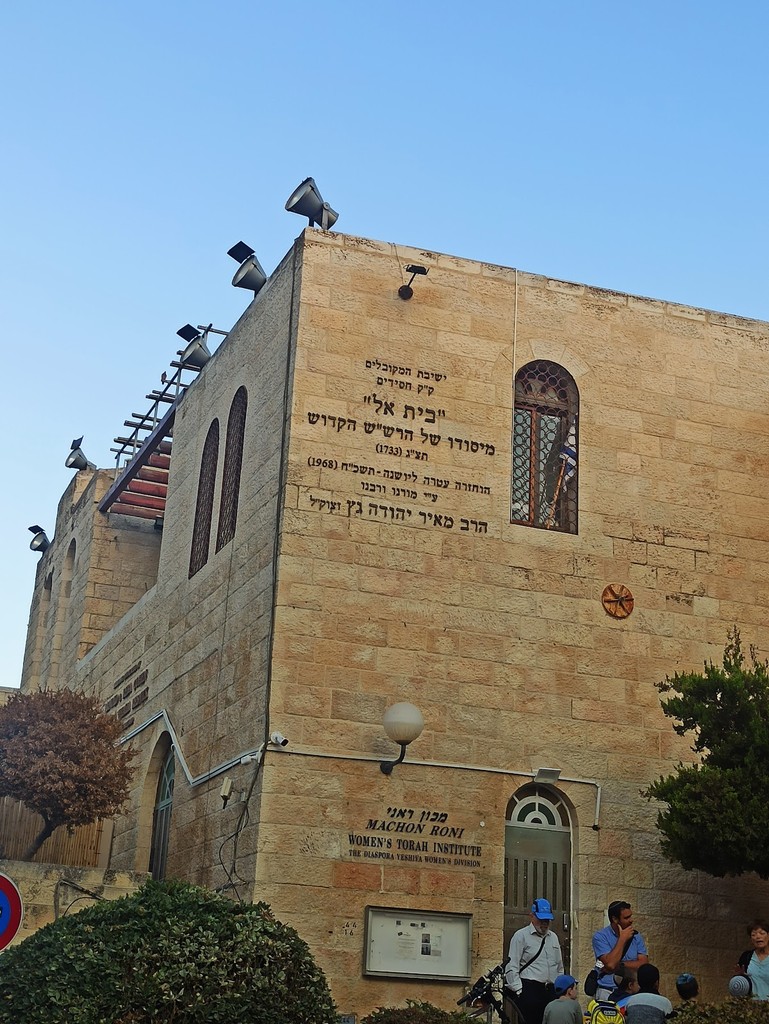
The Jewish Quarter (Source: Google Maps)
The Jewish Quarter of Jerusalem is a vibrant neighborhood rich in history and culture. This area is home to numerous historical sites, synagogues, and bustling markets, reflecting the deep-rooted heritage of the Jewish people in Jerusalem. Visitors can explore the ancient streets that have seen generations of life and tradition. The Quarter contains significant landmarks, including the Cardo, an ancient Roman road, and the beautifully restored Hurva Synagogue, which symbolizes the resilience of the Jewish community. The Jewish Quarter also serves as a cultural hub, with museums and art galleries showcasing the artistic expressions of Jewish life. As a living testament to the continuity of Jewish presence in Jerusalem, the Quarter invites visitors to immerse themselves in its history and spirituality.
Temple Mount (Har HaBayit)
Temple Mount is a historical and religious site mentioned in the Tanach, known for being the location of the First and Second Temples.
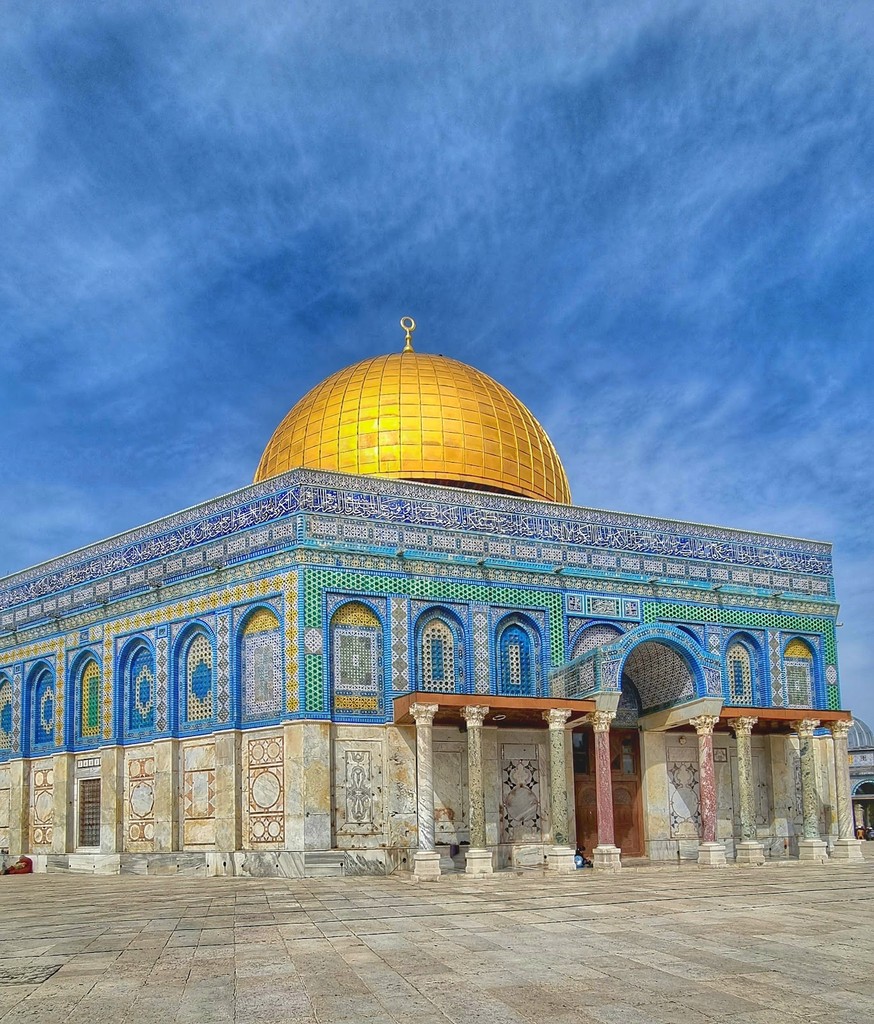
Temple Mount (Har HaBayit) (Source: Google Maps)
Temple Mount, known as Har HaBayit in Hebrew, is one of the most significant religious sites in the world, revered in Judaism, Islam, and Christianity. It is the location of the First and Second Temples, central to Jewish worship and identity. The site is mentioned extensively in the Tanach, representing the pinnacle of spiritual connection. Today, the Dome of the Rock and Al-Aqsa Mosque dominate the skyline, attracting pilgrims and tourists alike. The Western Wall, adjacent to the Temple Mount, serves as a place of prayer for Jews. The Mount's complex history reflects centuries of religious devotion, conflict, and change, making it a focal point for interfaith dialogue. Its archaeological significance is profound, as ongoing excavations continue to reveal layers of Jerusalem's ancient past.
City of David
The City of David is an archaeological site believed to be the original urban core of ancient Jerusalem, frequently mentioned in the Tanach.
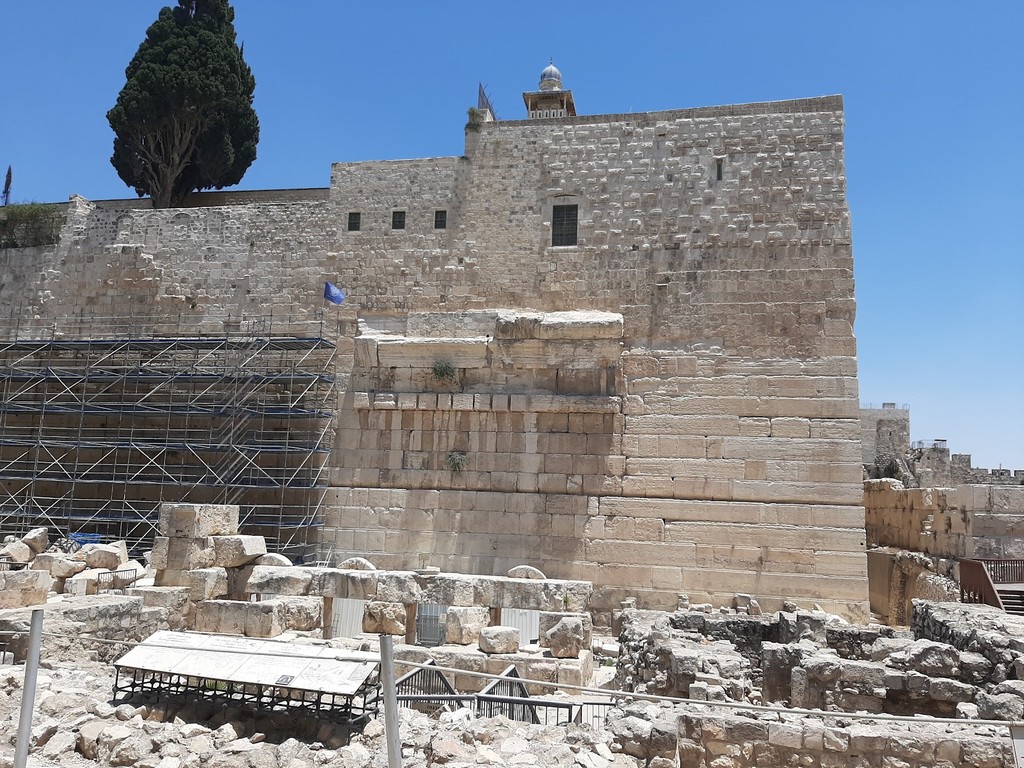
City of David (Source: Google Maps)
The City of David is an archaeological treasure that is believed to be the original urban core of ancient Jerusalem. Frequently mentioned in the Tanach, it is where King David established his kingdom. Excavations in this area have uncovered significant findings, including structures from the First Temple period and remnants of ancient fortifications. The City of David offers a glimpse into the daily life of its ancient inhabitants, showcasing the evolution of Jerusalem from a small settlement to a major city. Visitors can explore the ancient water systems, including the Gihon Spring, which played a crucial role in the city's water supply. The site is a testament to the rich history and cultural heritage of Jerusalem, attracting historians and archaeologists from around the world.
Hezekiah's Tunnel
This ancient water tunnel was constructed during the reign of King Hezekiah and is a remarkable feat of engineering described in the Tanach.
Hezekiah's Tunnel (Source: Google Maps)
Hezekiah's Tunnel is an extraordinary feat of engineering that dates back to the reign of King Hezekiah, as described in the Tanach. This ancient water tunnel was constructed to secure the city's water supply during the siege by the Assyrian army. The tunnel, approximately 1,750 feet long, was carved through solid rock, showcasing the ingenuity and determination of its builders. Today, visitors can walk through the tunnel, experiencing the cool water flowing along the ancient pathway. The tunnel's construction is a remarkable example of ancient engineering techniques, and it highlights the importance of water management in Jerusalem's history. Hezekiah's Tunnel not only served a practical purpose but also played a significant role in the city's defense, reflecting the strategic foresight of its leaders.
Mount Zion
Mentioned in the Tanach, Mount Zion is a significant site that includes King David's Tomb and offers historical insights into ancient Jerusalem.
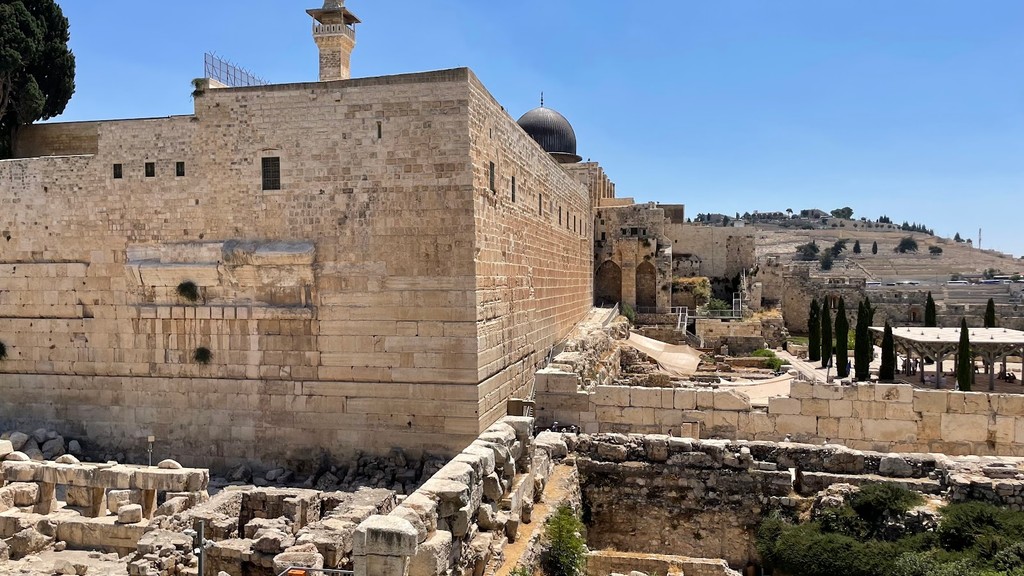
Mount Zion (Source: Google Maps)
Mount Zion holds profound significance in Jewish history and tradition, frequently mentioned in the Tanach. It is associated with numerous biblical events and figures, including King David, who established his capital here. The site is home to several important landmarks, including King David's Tomb and the Room of the Last Supper. Mount Zion represents a symbol of hope and redemption for the Jewish people, as it has been a focal point of longing and prayer throughout centuries of exile. The area offers stunning views of the Old City and is a place of pilgrimage for many. Historically, Mount Zion has witnessed the ebb and flow of Jerusalem's diverse cultures, making it a rich tapestry of religious and historical narratives.
The Davidson Center
This archaeological park offers a glimpse into the rich history of Jerusalem, with ruins and artifacts from the First and Second Temple periods.
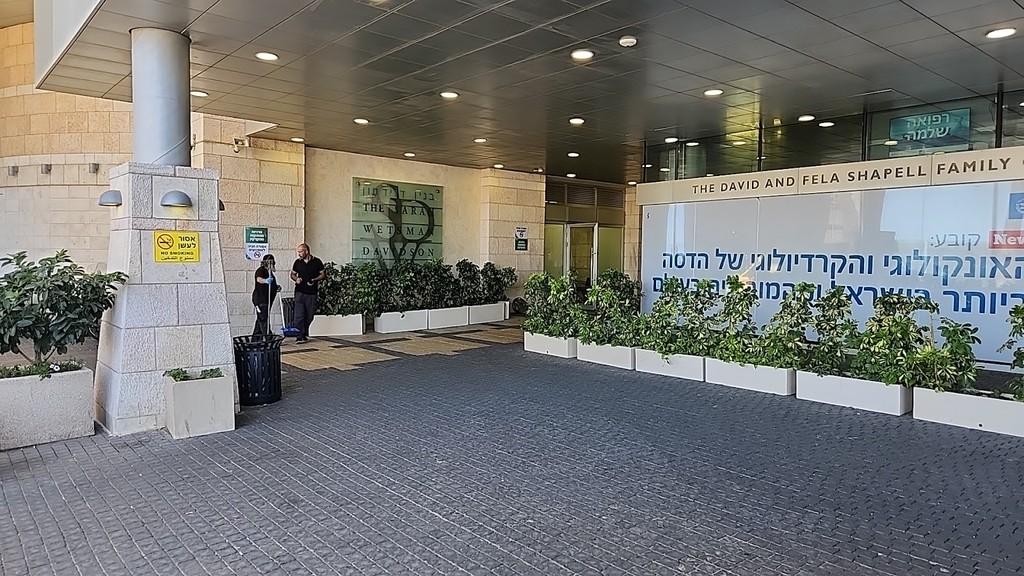
The Davidson Center (Source: Google Maps)
The Davidson Center is an archaeological park that offers an immersive experience into the rich history of Jerusalem, particularly during the First and Second Temple periods. The site features extensive ruins and artifacts that highlight the architectural grandeur of ancient Jerusalem. Visitors can explore the remains of structures that once formed part of the Temple complex, including the Southern Steps, which led to the Temple Mount. The Davidson Center also hosts exhibitions that provide context for the artifacts uncovered in the area, allowing visitors to understand the significance of their discoveries. This center serves as a bridge between the past and present, showcasing the enduring legacy of Jerusalem's sacred history and its impact on contemporary society.
Broad Wall
The Broad Wall is an ancient defensive wall built by King Hezekiah, mentioned in the Tanach as part of Jerusalem's fortifications.
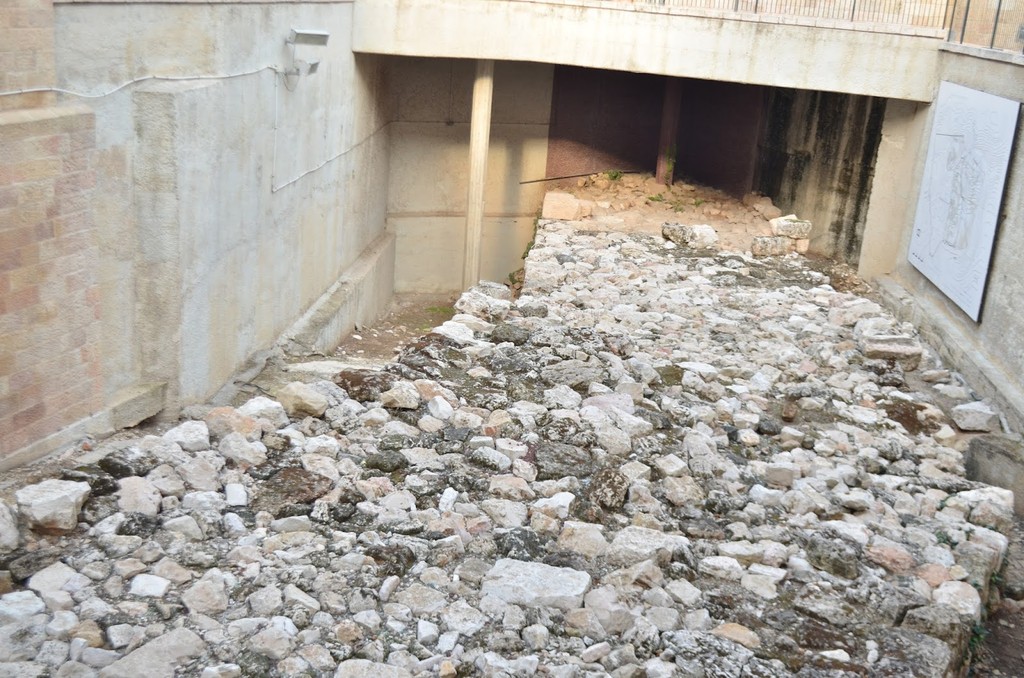
Broad Wall (Source: Google Maps)
The Broad Wall is an ancient defensive structure built by King Hezekiah during the 8th century BCE. Mentioned in the Tanach, this impressive fortification was constructed in response to the threat posed by the Assyrian Empire. The wall, which stretches approximately 70 meters, was designed to protect the city from invasion. Its construction involved massive stones, some weighing several tons, demonstrating the engineering capabilities of ancient Jerusalem. The Broad Wall is a testament to the city's strategic importance and resilience in the face of adversity. Today, visitors can view the remains of this significant structure, which serves as a reminder of Jerusalem's tumultuous history and the efforts made by its leaders to safeguard their people.
Hurva Synagogue
The Hurva Synagogue, recently rebuilt, is an iconic structure in the Jewish Quarter with a rich history that ties back to Jerusalem’s ancient past.
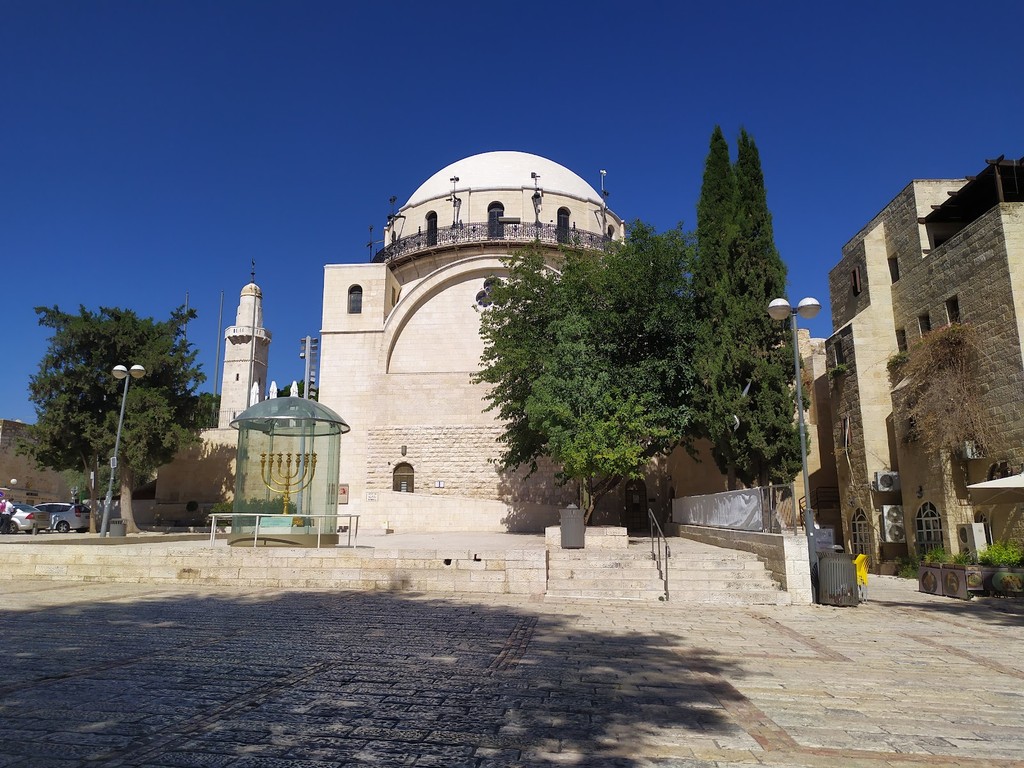
Hurva Synagogue (Source: Google Maps)
The Hurva Synagogue, an iconic structure in the Jewish Quarter of Jerusalem, has a rich and complex history. Originally built in the 18th century, it became a central place of worship and community for Jews in Jerusalem. The synagogue was destroyed in 1948 during the Arab-Israeli War and lay in ruins for decades, symbolizing the challenges faced by the Jewish community. In recent years, the Hurva Synagogue has been meticulously rebuilt, restoring its grandeur and significance. The synagogue features stunning architecture, including a large dome and intricate interior designs that reflect its historical importance. Today, it serves as a vibrant center for prayer and community events, bridging the past and present while embodying the resilience and spirit of Jerusalem's Jewish heritage.

Your travels, your rules.
Create your own Free Walking Tours.
Set your preferences, distances and anything you want to do or see.
Completely free, no payment required.